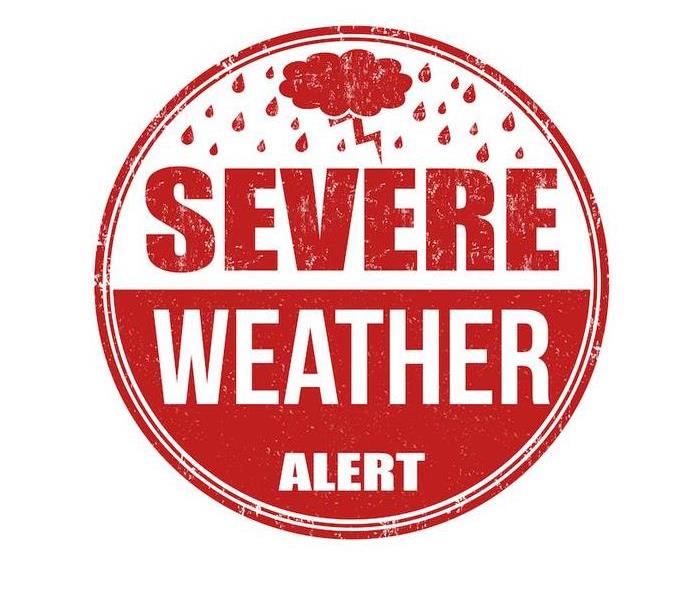Different Storm Alert Meanings and How to Stay Safe | SERVPRO® of Anniston, Gadsden and Marshall County
7/18/2022 (Permalink)
 If you suspect any damage to your home from a recent storm, call SERVPRO of Anniston, Gadsden and Marshall..
If you suspect any damage to your home from a recent storm, call SERVPRO of Anniston, Gadsden and Marshall..
When it comes to weather forecasts, there are more than 42 different kinds of weather alerts from seven different categories. That can be an excessive amount of information to try and absorb at once, particularly as the weather is turning scary.
Understanding what an alert means before it is issued in your area means that you can get yourself and your loved ones to safety as needed. It also means you can take preventive steps to protect your home and property.
Having a general knowledge of all weather systems is incredibly helpful, but understanding the most common weather that affects us here in Alabama is absolutely essential.
Have you ever wondered how alerts are issued in the first place? If weather forecasts are simply predictions, how is the severity, location and duration of a storm actually monitored? There are actually multiple answers to both of those questions.
The organization responsible for weather forecasts and consequently issuing any needed warnings is the National Weather Service. There are six regional offices, and multiple other forecasting offices, which means alerts you receive are localized. In central Alabama, our warnings are issued from the Birmingham forecasting office.
Out of these offices, meteorologists and other NWS employees use several forms of data to create the forecast, including satellite radar, sensors, seismic activity meters and even solar activity. The type of data used varies according to the weather event, but the end goal is always to be as accurate as possible.
While understanding alerts that are possible in our local area is very important, everyone should know the difference between a watch and a warning. These are both used in almost every weather event, including thunderstorms, flooding and winter storms.
When a watch is issued, it means to begin preparing for a potentially severe weather situation. Watches are typically issued to cover a large area, while a warning is issued in a smaller area such as a county or a city when severe weather activity has been pinpointed.
Warnings mean that a dangerous storm will happen and safety measures need to be implemented immediately to protect your home and your family.
Our weather has always been a mixed bag, with up and down temperatures in the winter and thunderstorms and tornadoes in the spring and summer. Along with understanding the basic difference between a watch and warning, it is essential that we stay aware of flood, tornado and thunderstorm alerts. We also have to watch for the occasional freeze and winter storm warnings.
Understanding the weather alerts that can be issued before a storm is the best way to protect your home, but there are some other steps you can take to mitigate damage.
Keeping any outdoor furniture properly secured and cleaning your gutters on a regular basis are two highly effective ways to prevent flooding and wind damage.
You should also ensure you have a safe space with emergency supplies in an interior room of your house for sheltering in place and an exit plan for when you need to leave.
Once the storm has passed, take inventory of any damages you have received, and make a call to us at SERVPRO. We are available 24⁄7 to get your restoration started quickly in order to save as much of your home as possible.
The more you learn about our ever changing weather, the safer you and your family can stay. Start by learning the different alerts we often see issued in Alabama and ride out the next storm well.
Experienced storm damage to your home or property? Contact us today for a quick response!



 24/7 Emergency Service
24/7 Emergency Service